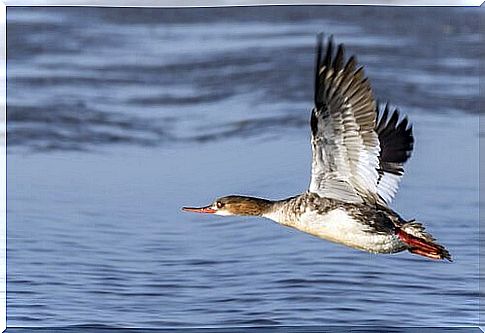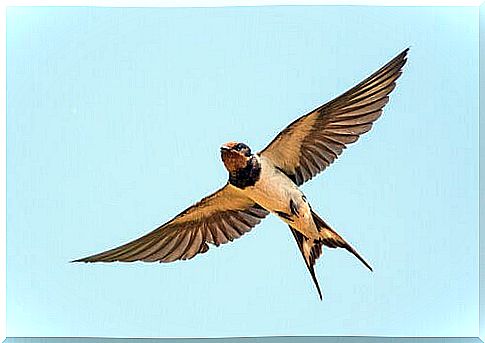Orientation In The Flight Of Birds

We often observe groups of birds crossing the sky intent on making their migratory journey. It is difficult not to wonder how they manage to follow an orientation in flight and not get lost in following such long journeys.
Let’s see together how the orientation in the flight of birds works.
Some studies to understand the orientation in the flight of birds
A Danish ornithologist named Finn Salomensen has completed some studies on sea swallows and their ability to orient themselves in flight. In particular, the scholar has selected some specimens of two species: the stolid brown tern and the dark sea swallow (also known as sooty tern).
First of all, the selected specimens were captured and identified to allow the recognition of their geographical position. Later, scholars pulled them away from their nests, which were located in the Gulf of Mexico, to take them over 1,000 kilometers away.
The second part of the study consisted in releasing the birds in the open sea leaving them free to fly, while their position was constantly checked for subsequent analysis.
To the general amazement, the majority of the swallows were able to return to their nests without too much trouble. This confirms the power of their sense of direction. However, the demonstrations in this regard are not over.

Other studies carried out in Wales have been based on some birds belonging to the puffinus species (the Atlantic shearwater). These birds were removed from their nests (in Wales) and then released into the open sea near Boston (United States).
After an uninterrupted flight of nearly 13 days, covering a distance of more than 5,000 kilometers across the Atlantic Ocean, the birds were incredibly able to return to their nests.
Further studies revealed how, even if sidetracked, birds are always able to find the right orientation. In fact, in some experiments on the subject, the birds chosen were anesthetized or induced to turn around their own axis to generate a temporary disorientation. And the results showed that these attempts didn’t interfere with their sense of direction.
How does science explain bird flight orientation?
The development of technology and science has made it possible to take decisive steps in understanding the orientation in the flight of birds. Below we will see what science says about this incredible ability of birds.
Birds use their senses to locate themselves
Experts have shown how birds, like humans, use their senses to locate themselves in time and space. When they fly, they use their hearing and sight to recognize landmarks that can trace their migratory path.
For example, through their eyes they can recognize mountains, cliffs or forests that can show them the correct path. In the same way, through their hearing they recognize sound stimuli typical of the landscapes they encounter during the journey.
In this way, during the flight these small animals recognize “signals” that help them to maintain their orientation and to know when they have reached their destination.

Migratory species have a routine navigation system ; through it they learn to know which is the right path to take to return home even when changes of direction are needed. Here is therefore explained why disorienting them does not make them lose their way.
The senses are also important to communicate with the other members of the migratory flock and therefore recognize any problems during the journey. This feature plays a crucial role, for example, in identifying possible predators or natural adversities.
Birds have a compass
It may seem strange to us to think that a bird has a GPS navigator to orient itself during migration. And in fact it is not. The truth is that they don’t need it, as they can count on a magnetic compass built into their body.
Scientists have observed that migratory birds have, inside the eye, a system very similar to that of magnetic compasses. Their retinas are able to pick up light in a polarized way and therefore have a unique navigation system.
Depending on the movement of the sun, the position of the stars or the moon, these animals recognize which direction to move during their long journeys. When the light changes, birds can “reorient” their built-in compasses and figure out which route to take to reach their destination.
The ability to orient themselves according to changes in light is the great secret of birds’ orientation in flight, as well as their incredible ability to always find the right course.








